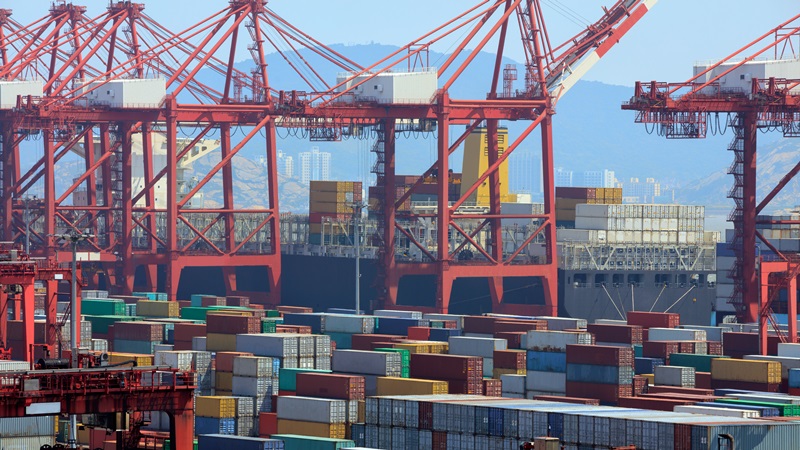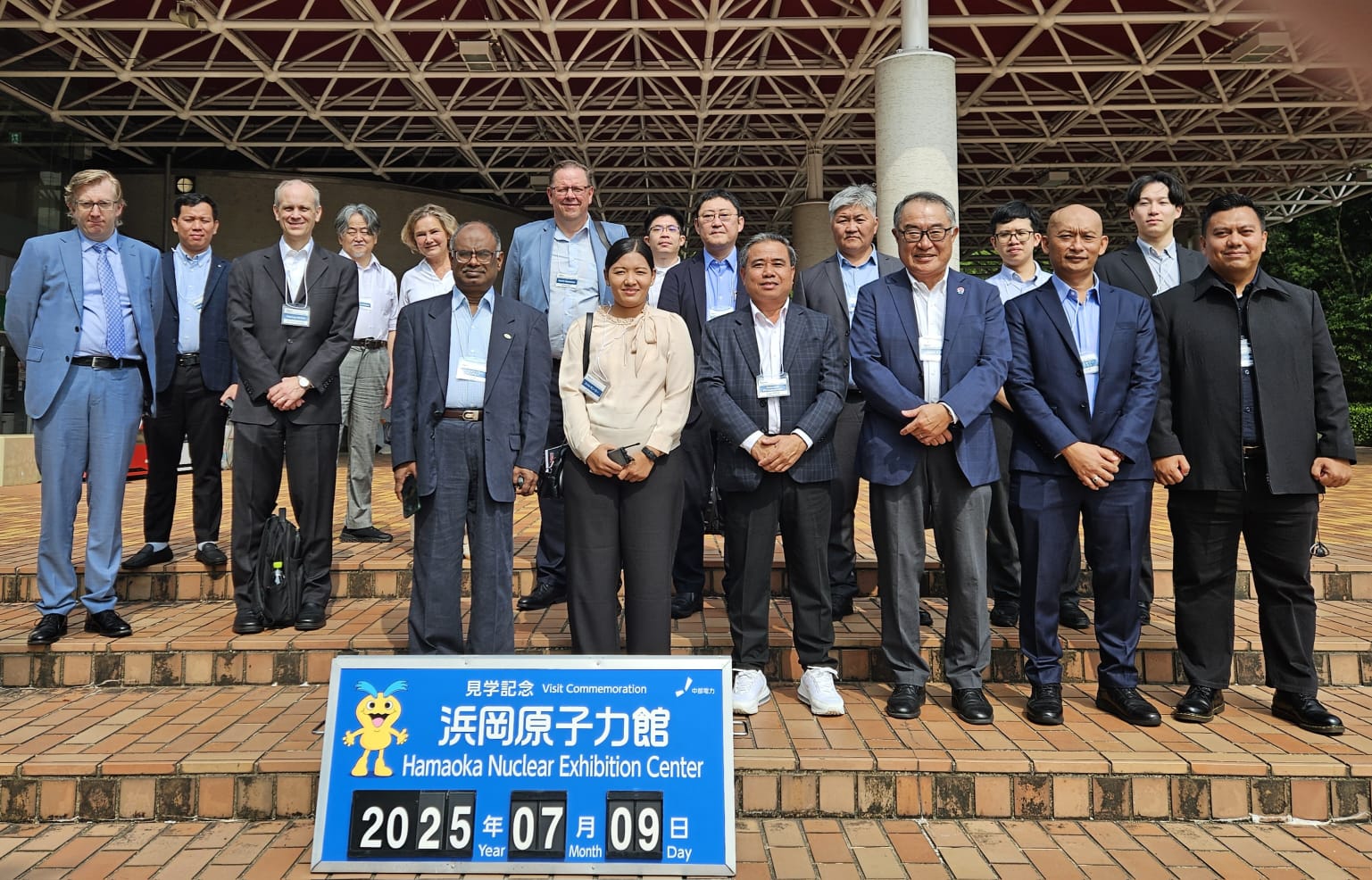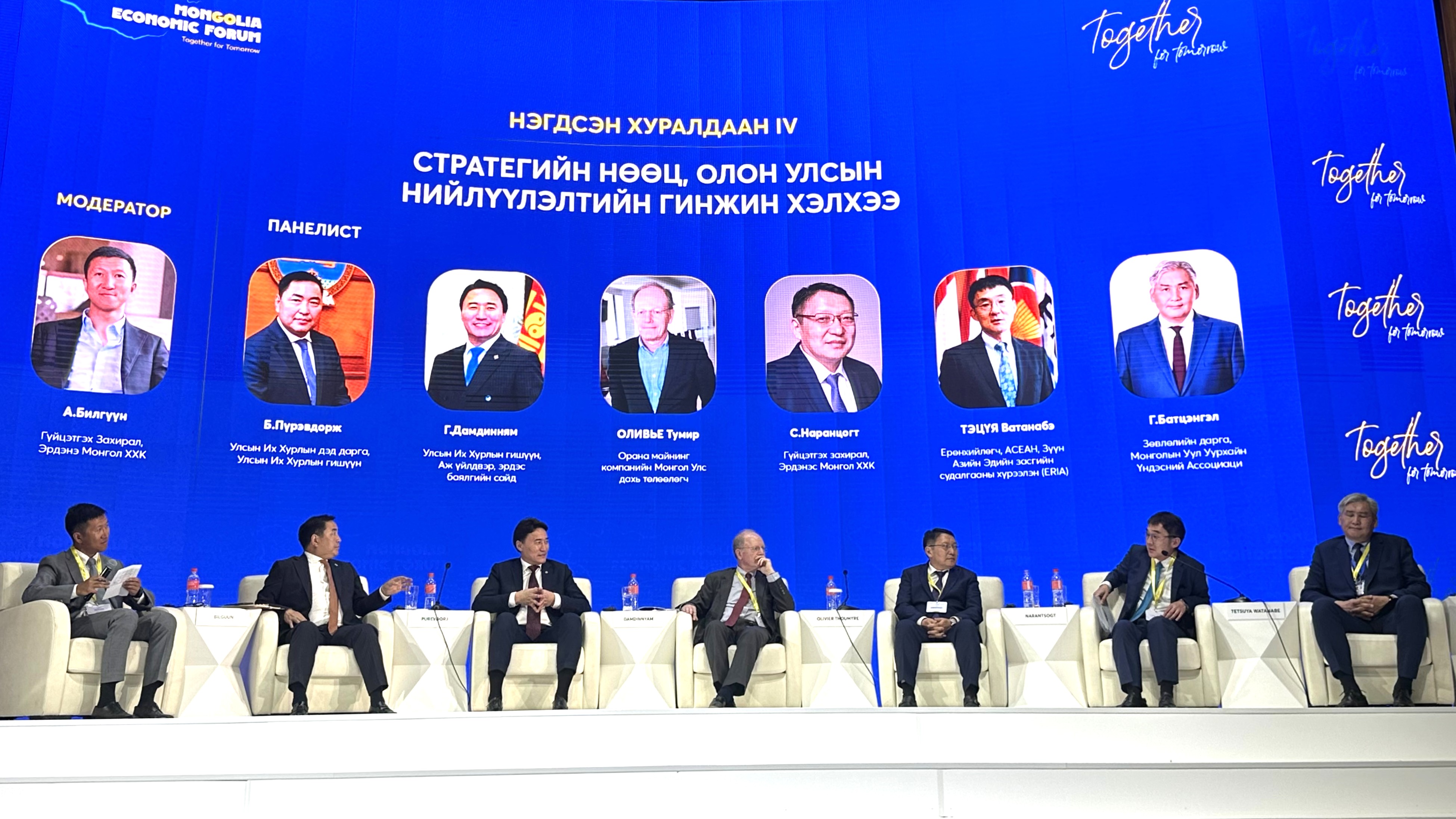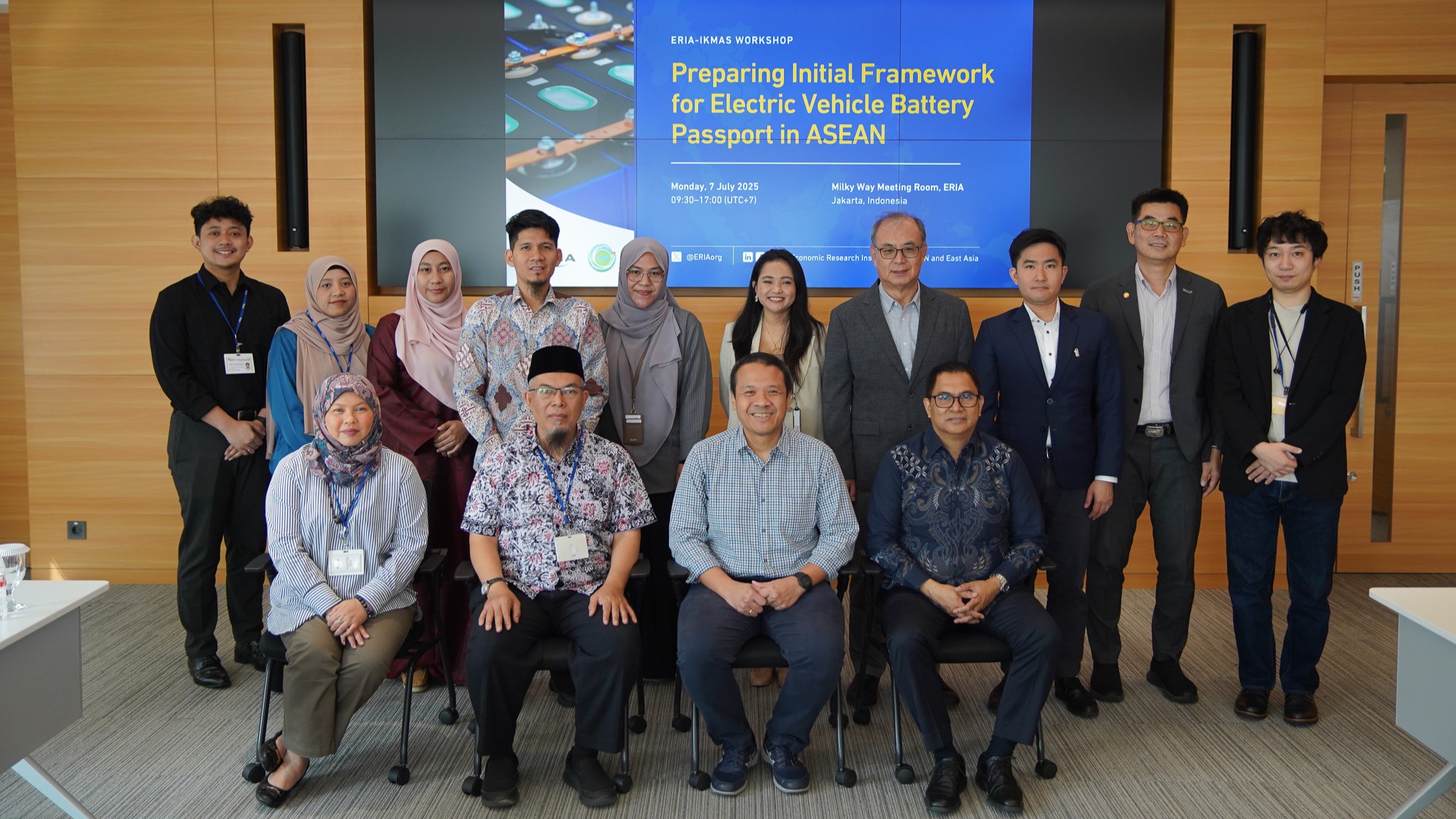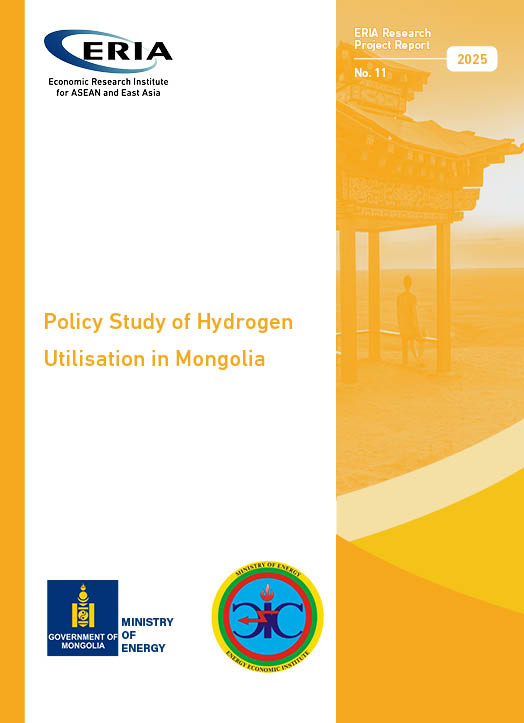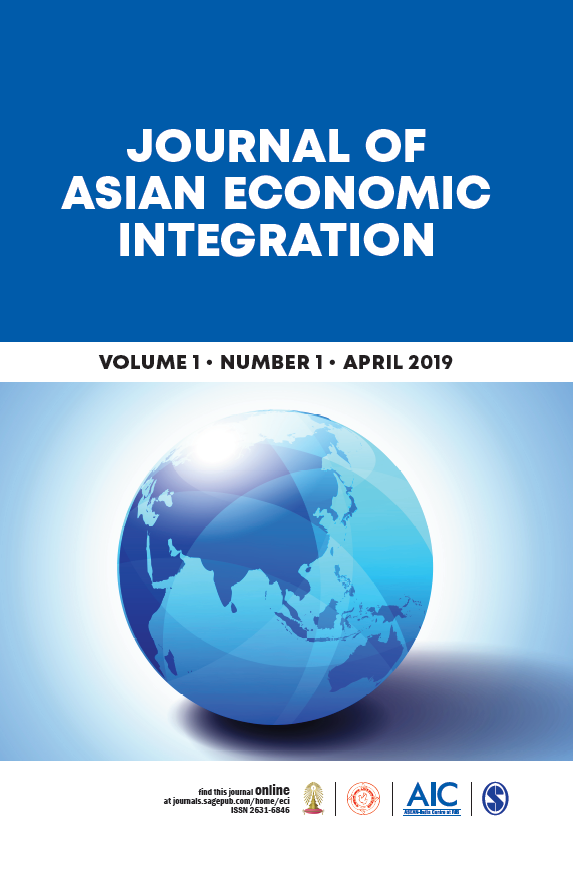China's Trade Expansion: A Friend or a Foe for ASEAN Countries?
Date:
30 November 2016Category:
OpinionsShare Article:
Print Article:
The rapidly changing dynamics of global trade has prompted countries to continuously examine their roles in international trade, considering the fact that shifting trade structures can affect some countries more than others and alter global economic trends. China's increasingly integrated trade which resulted from the country's accession to the World Trade Organization (WTO) in 2001, the abolition of the Multifibre Arrangement (MFA) garment export quotas in 2005, and significantly reduced trade barriers since the 1990s supported China to become a dominant player in the multilateral trading system (Mattoo and Subramanian, 2014). In this article, I will discuss the challenges and opportunities for ASEAN countries due to China's trade expansion (until recently). I will also analyse ASEAN's trade position with China compared to the trade positions of Japan and South Korea.
The first challenge that ASEAN countries have to face from China's trade expansion is competitiveness, especially as ASEAN countries have similar comparative advantages in labour-intensive products and higher value added products. China's WTO accession, which resulted in increased export market access and reduced costs of imported intermediate goods for its manufactures, undermined the competitiveness of key Southeast Asian manufacturing sectors in world markets (Ianchovichina & Martin, 2004; Ianchovichina & Walmsley, 2005).
Secondly, China's expansion may hamper ASEAN industrialisation and make it more difficult for resource-rich ASEAN countries to escape the resource curse. China's increasing demand drives up the prices of many raw materials, which then encourages resource rich nations to develop more of their natural resources, often at the expense of developing more value added industries. For example, China's demand for forest products such as timber, nuts, and fruits has increased, triggering an increase in forest product exports by ASEAN countries. Indonesia, for example, has increased its legal forest product exports to China by about 60 percent since 1997 (Coxhead, 2007). The resource-abundant nature of many ASEAN countries could push them to become more specialised in resource-based exports and less specialised in labour-intensive manufacturing (Ianchovichina and Martin, 2004; Ianchovichina and Walmsley, 2005; Ng and Yeats, 2003; Weiss and Gao, 2002). Furthermore, ASEAN's resource abundant-economies may face a poor welfare outcome in the long run due to resource depletion, especially given the historically weak regulations governing controlling natural resources in those countries (Coxhead, 2007).
One useful way to examine potential challenges and opportunities for ASEAN countries posed by China's expansion is to apply the Revealed Comparative Advantage (RCA) Index. The RCA Index was first introduced by Bela Balassa in 1965 and has been widely used ever since to provide detailed indications of multilateral trade intensity. The RCA measures the intensity of a country's exports of a certain class of goods relative to the intensity of world exports of that class of goods. Products with RCA values of greater than one are products in which a country has a comparative advantage, and vice versa. To identify trade competitiveness patterns that potentially indicate trade interdependencies between ASEAN countries and some industrialised East Asian countries especially China, I calculated RCA values of ASEAN countries, China, Japan and South Korea based on the two-digit productclassification of the Harmonized System (HS) 1988/92 for the period of 2001-2014.
The results show that Japan and South Korea have never been competitive in agricultural and natural resources products, whereas most ASEAN member states1 are competitive. China is relatively competitive in some natural resource-based and mineral-based commodities; however, they are much more competitive in a wide range of manufactured products produced in labour-intensive or capitalintensive industries. Therefore, although China can produce raw materials from their own resources they may choose not to do so, thereby creating the demand to import raw materials from neighbouring ASEAN countries, and creating the kind of circumstances that make it difficult for some ASEAN Member States (AMS) to avoid the resource curse.
Despite these challenges, ASEAN countries can benefit from opportunities in the increasing trade of goods with the world's second largest economy. Data from UN Comtrade database (Figure 1) show that ASEAN countries' exports and imports of goods with China have steadily increased since 1997 with a considerable acceleration following China's accession to WTO in 2001. The rising importance of ASEAN countries to China as suppliers and consumers is likely caused by the countries' close geographical proximity.
However, a persistent decline of China's economic and total trade growth since around 2013 could be a signal of changing opportunities for ASEAN countries. Although still maintaining strong trade relations with ASEAN countries, China is now turning more to its domestic market instead of relying on exports. This can be an opportunity for other countries, by taking into account China's growing aging population with rising incomes. A previous ERIA study (Intal Jr., Narjoko and Simorangkir, 2010)addressed this by arguing that China's fast growing middle class and ageing but well-off population offer opportunities for some service industries such as tourism and healthcare. These are the areas in which ASEAN Member States (AMS) could also foster their comparative advantage2 by developing the necessary infrastructure for these two sectors. An amalgamation of both sectors by combining high quality medical services with affordable tourist packages, known as medical tourism, has been aflourishing industry in Southeast Asia, particularly Thailand, Malaysia, and Singapore. In addition, thegovernments of Indonesia, the Philippines, and Viet Nam have also conveyed their interest in developing this industry (Pocock, N. S. and Phua, K. H., 2011).
In summary, China's trade expansion might possess long-run challenges for AMS through the overlapping features of their trade between each other and the risk of ASEAN countries becoming trapped in the resource curse. However, recent declining trends of China's economy and total trade growth provides some opportunities for ASEAN countries. While still being key trading partners with China, ASEAN countries could reap the potential benefits from these opportunities to become major exporters by strengthening their industries. Through the right policy reforms and stronger domestic institutions, ASEAN countries could also transform themselves into high-quality product makers and service providers while avoiding the resource curse trap in the long-run.
China's Trade Expansion: A Friend or a Foe for ASEAN Countries?
 | Rahmasari Istiandari is a Research Associate at the Economic Research Institute for ASEAN and East Asia (ERIA). She holds a master's degree in Economics from University of Indonesia. She previously served as a consultant for Bank Indonesia and the World Bank. Her works in ERIA mainly focus on the topics related to industrial organization, international trade, Small and Medium Enterprises (SMEs), as well as ASEAN economic integration. This post originally appeared on ERIA Frames newsletter in November 2016. These opinions are her own and do not necessarily represent ERIA. Click here to subscribe to the monthly newsletter. |
References
Balassa, B. (1965). Trade Liberalization and 'Revealed' Comparative Advantage. Manchester School, 33, 99-123.
Coxhead, I. (2003). Development and the Environment in Asia: A Survey of Recent Literature. Asian-Pacific Economic Literature, 17(1), 22-54.
Coxhead, I. (2007). A New Resource Curse? Impacts of China's Boom on Comparative Advantage and Resource Dependence in Southeast Asia. World Development, 35(7), 1099-1119.
Ianchovichina, E., and Martin, W. (2004). Economic impacts of China's accession to the WTO. In D. Bhattasali, S. Li, and W. Martin (Eds.), China and the WTO: Accession, policy reform and poverty reduction strategies (pp. 211-236). Washington, DC: Oxford University Press & World Bank.
Ianchovichina, E., and Walmsley, T. (2005). The impact of China's WTO accession on East Asia. Contemporary Economic Policy, 23(2), 261-277.
Intal Jr., Ponciano, Dionisius Narjoko and Mercy Simorangkir, "ERIA Study for Further Improvement of the AEC Scorecard: Interim Report". Presentation at ERIA workshop, 4-5 September 2010.
Kwan, C. H. (2002). The Rise of China and Asia's Flying-Geese Pattern of Economic Development: An Empirical Analysis Based on US import statistics. Nomura Research Institute Papers No. 52.
Mattoo, A. and Subramanian, A. (2014). China and the WTO. In: S. Fan, R. Kanbur, S. Wei and X. Zhang, ed., The Oxford Companion to the Economics of China, 1st ed. Oxford University Press, pp.125-127.
Ng, F., & Yeats, A. (2003). Major Trade Trends in East Asia: What are Their Implications for Regional Cooperation and Growth?. World Bank Policy Research Working Papers No. 3084.
Pocock, N. S. and Phua, K. H. (2011). Medical Tourism and Policy Implications for Health Systems: A Conceptual Framework from a Comparative Study of Thailand, Singapore, and Malaysia. Globalization and Health, 7(12).
Roland-Holst, D. (2002). An Overview of PRC's Emergence and East Asian Trade Patterns to 2020. ADB Institute Research Paper No. 44.
UN Comtrade (2016). UN Commodity Trade Statistics database. < http://wits.worldbank.org/ >, accessed June 2016.
Weiss, J., and Gao, S. (2002). Peoples' Republic of China Export Threat to ASEAN: Competition in the US and Japanese markets. Asian Development Bank Institute Discussion Paper No. 2.
